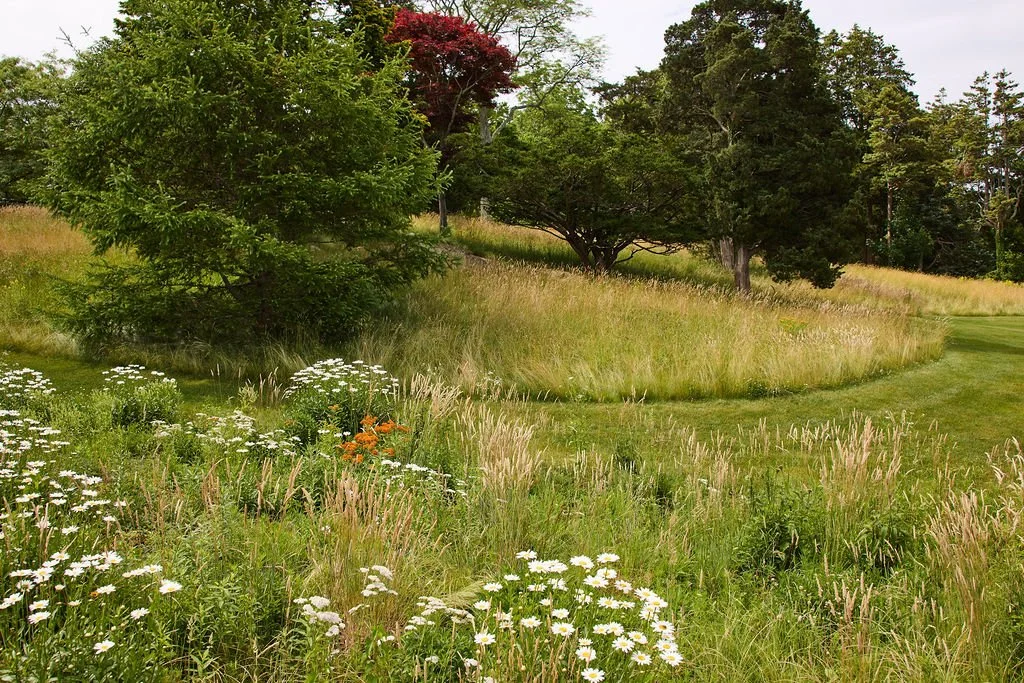Return to Nature in its Purest Form
Botanica Meadow Services:
Installation & Management
Imagine waking up to views of your own private backyard meadow where flowers and pollinators thrive. The birdsong, low hum of bees, and colorful carpet of wildflowers are evidence that your landscape is a thriving, balanced ecosystem. Here, beneficial animals and insects abound and there are no soil-depleting fertilizers or harsh pesticides to contaminate the watershed—only nature in its purest form.
A Solution For A Drier Climate
From the rugged beauty of the Berkshires to the dazzling Atlantic coast, New England is home to a wide range of unique flora and fauna. But this place we call home is not exempt from the effects of a changing climate. Each season brings new challenges, but also new opportunities. During the driest weeks of the year, we watched countless lawns brown up, yet meadows remain vibrant while providing habitat, food, and shelter for beneficial wildlife.
Our expert NOFA-accredited ecological landscape professionals offer meadow installation and maintenance to help you transform your lawn (or part of your lawn) into an ecologically-friendly meadow.
Here are some of our favorite resources to learn more:
Meadows Are The Environmentally Friendly Solution
Meadows are resilient ecosystems of native grasses and flowers that are a low-input alternative to the traditional lawn. Once established, there’s no need to irrigate, fertilize, or mow on a weekly basis. Meadows thrive under dry conditions and once established, provide visual interest throughout the season. Imagine a landscape with color and texture that invites songbirds, butterflies, lightning bugs and more to your yard, all while saving on landscaping costs over the years.
How We Can Help
We’re passionate about building resilience into your landscape. By transforming just a portion of your lawn into a meadow of native grasses and flowers, you can benefit wildlife as well as reduce maintenance costs—all while providing a lush outdoor space where you and your family can entertain, relax and play. From planning to installation and maintenance, we are your meadow experts.
Frequently Asked Questions about Meadows
-
We mow meadows in the spring, usually after dandelions bloom. This allows the invertebrates (insects) to awaken and hatch from their winter home in your meadow. Additionally, letting the flowers grow and remain until next year adds winter interest, or “winterest,” as the seed heads flow in the winter breeze above the snow.
-
A great transition zone from lawn to meadow is at the border where your lawn meets the wood line. This meadow buffer allows you to utilize your lawn and still enjoy the ecological benefits of meadows.
-
When we plant plugs (established seedlings), we monitor soil moisture and irrigate when it is dry. If we are using seeds to start a meadow, no water is required: the species we select are drought tolerant and lie dormant until the right conditions arise. If one waters a meadow too often, it allows shallow rooted weeds to establish and outcompete the meadow. Extended periods of drought can necessitate some irrigation.
-
Typically, it takes 3-5 years to establish a seeded meadow. Maintenance costs are mostly up front in the first 1-3 years, when it’s necessary to monitor weeds and mow two or three times. After the meadow is established, typically after three years, it only needs to be mowed once a year.
The time it takes for a meadow to establish is dependent on budget and size. For example, a 15'x15' meadow can be established quickly by planting plugs and/or by using larger one-gallon pots. For a larger area, we might use seeds instead of plugs. This will take longer to establish as the seeds germinate but reduces initial costs.




